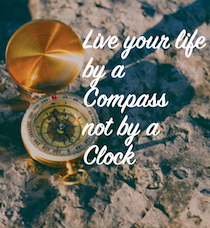Safety Training Talk
Safety Training Talk Summary – March 2025
Yesterday we held a training talk on safety topics and pre-season reminders for members of The Boat Club at Parkstone Bay Marina. We thought it may useful to replicate some of the content here. The talk was regarding safety topics and things to think about, ahead of a new season. They are always a great chance for members to get together and exchange ideas within a structured session. This is not a full guide and is designed as an aide for those who attended but this blog might be a useful extra to boat owners too. Most of our members are getting afloat locally, in daylight, so the information reflects that.

Planning
The first topic we talked about was planning our trips and our preferred apps and sources of information. We asked members to throw forward their ‘go to’ apps to ensure safety afloat.
Weather & Tides
Weather: For predicted wind forecasts two of the preferred apps in the room appeared to be Windy, Windguru and Savvy Navvy. The importance of also checking the met office inshore waters forecast was discussed.
- Windy: a visual guide that allows you to watch weather patterns
- Windguru: a relatively straight forward numbers based guide with helpful colour coding
- SavvyNavvy: as part of the navigation app subscription there is a weather tab which allows you to swap between two different forecasting models
- Met Office Inshore Waters: remember this is a wide area and valid for waters up to 12 miles offshore but is updated every 6 hours
Whichever app you choose it is important to ensure you have checked the units of measurement the information is presented in – knots, mph, beaufort etc. Don’t forget that on windguru you can click on the windspeed to reveal all the different forecasting models allowing an easy comparison.
We then talked about the usefulness of live information and one of our local sites Weatherfile. Not only does it allow you to compare the forecast with what is actually happening but also to look back and quick a log of windspeeds and whether that was comfortable. Another favourite of ours is Windycator which collates information from different sources.
Tides:
In Poole we have a fabulous tide planner that we recommend people buy. This allows you to se the tidal curve and the whole years predictions. Online one of the most popular sources of information was Easytide. SavvyNavvy also gives you a great visual guide.
Live information: bear in mind the information above is a prediction but the air pressure or even wind direction and strength can impact the reality. We are lucky in Poole that we can access live information and compare it to the prediction on the Harbour Master’s website Live Tide PHC
Weather radar can also help avoid rain during trips and a favourite of mine is RainAlarm. The Met Office also do a similar version Rain Radar




Navigation:
There are a variety of navigation apps out there but clearly SavvyNavvy was a preferred choice of members. One of my current favourite features is AIS, useful to see what commercial boats in particular are on route. I like to complement this with Memory Map which shows raster charts and also allows you to set routes etc. Other navigation apps include Navionics which has long been popular and CMap. Remember to analyse the information you receive and collaborate data. Looking out the window is important- don’t get lost in electronics!
Paper charts are still with us for a little while longer. We absolutely use these as we find it gives a good overview in advance of a trip. Imray and Admiralty are still providing charts. Check they are up to date using chart correction information.



Tracking:
Whilst members of The Boat Club and our own training boats all have trackers, it is also important to be running apps such as RYA Safetrx to enable the Coastguard to best help you should you require it. At the very least get registered on Safetrx. One of our members asked a good question about finding out data on club boats to be able to register them. I’d suggest the fleet tab on the members app is the best place to find this.
To my mind – the tracker helps me manage boats internally, check where they are, geofence locations and check past history. Safetrx is my active information on trips, allowing the coastguard to access data if needed.
Notices:
Make sure you are registered to receive LNTMs (Local Notice to Mariners) for all the ports you visit. For members that will most likely be Poole but also Lymington, Yarmouth, Beulieu etc. In Poole you can still receive them via email – Poole LNTM. The Harbour Master also has a WhatsApp channel on which they are published which is really useful.

It is worth having a look at our own webpage for links to resources:
https://dorsetmarinetraining.co.uk/resources-page-boating-links/
Lifejackets
Our next topic was lifejackets, and we started the chat talking about different types. It is important to check they are the right size and fit for the person involved, children have different requirements than adults. Also to consider what additional features you might look at such as sprayhoods, lights etc. The club provides members with fully serviced lifejackets but if you have your own it is important to ensure they are serviced annually. Also, important to ensure they are stored properly, not thrown in damp lockers or car boots. Respect your lifejacket!
Fitting:
We next had a quick competition whereby all attendees were handed a lifejacket and challenged to fit it to the best of their ability. Everyone was suitable involved, and we talked about the need to help each other and ensure the central belt is fitted properly before the crotch strap. The RNLI issue a great lifejacket guide which includes a video on fitting: RNLI Guide . The club has Seago Lifejackets and their guide on fitting can be found here: Seago Seaguard Lifejacket. Dom also showed a video from the RNLI highlighting the importance of correctly fitting crotch straps. This seemed to impact our talk attendees as it is a powerful visual. Although I haven’t the link to the exact video a similar version is available here: RNLI Crotch Straps
We then set lifejackets off on a couple of volunteers. Attendees commented how sizeable the lifejacket was, how to let a little air out and how cold the canister might be.
This led onto a chat about pet lifejackets and the need to be able to get hold of dogs if they fall in. We also discussed buoyancy aids and the need the consider this if paddleboarding. They are quite different to lifejackets – if you aren’t sure drop us a line to chat.
Safety Brief
Next up was an interactive session on what information we thought we should include in a safety brief to friends and family. We discussed why they are so important. Lots of ideas from members including:
- The proposed itinerary
- A guide to staying safe
- When to help and when to sit still
- Any medications or health issues
- How to call for help
- Where safety kit is located
- Not distracting the skipper
All good and valid points!

Electronics
As we discussed getting ready to set off we chatted about electronics. When people undertake their initial training there is so much to remember that it is understandable they can’t remember exactly how to use every piece of electronics. The point of our chat was to suggest members use a bad weather day to look at the chart plotters on the pontoon.
A simple list of questions to ask includes can I:
- Ensure the speed and depth are displayed (and where is depth read from)
- Set a depth Alarm
- See the position – lat/long
- Set a route using the chart
- Use a lat /long as a waypoint
- use North Up as a display
- tell how up to date is chart
- understand what the limitations of chart plotters may be
- Know what SOG, XTE, COG stand for
Can I set up and operate the VHF radios?
Can I find the isolators?
Where is the fuel gauge particularly on digital displays?

Pre-Departure Checks
Before we actually leave the pontoon we should ensure we have a routine of checks. Have we turned on isolators, checked lockers, fenders, bilge, controls, engines? Many people at the club use the term KNIGHTS for startup to check Killcord, Neutral, Ignition (checking behind), Gears, Hot Telltales and Steering (checking how many turns lock to lock). We have a short video as a reminder: Daisy Pre Start Checks Don’t forget to check fuel levels, VHF including volume and squelch and that the killcord works.
Safety Kit
An interactive session asking what safety kit people thought should be on board the boat led to reasonably long lists. The club boats are all licensed, so safety kit is provided for members. It is however important to note where kit is stored and how and when to use it.
Ideas of safety kit included: anchors, ropes, bailers, fire extinguishers, first aid kits, TPAs (similar to foil blankets but the marine version for water), flares, throw line, compass, VHF radio, boat hook, life raft and life jackets. We also carry drogues, harnesses, radar reflectors, fog horns and buckets.
Fire extinguishers:
do you know what type are on board and how to use one? What size fire extinguishers are on board each boat. What should you do in the event of a fire?
First Aid:
we chatted about the kits we carry and the need to look after ourselves until help arrives. Would you know what to do in the event of needing CPR or choking onboard? Most people had not looked inside a Cat C kit before to know what was inside it, so we opened an old one and lay out the contents on the table. If it’s a while since you undertook a course, why not consider the one day RYA First Aid course which we run regularly on site. We can even organise bespoke courses for your family or crew.
Throw lines:
It is important to practice and ensure you could use one effectively in the event of an incident. Most people in the room had taken the opportunity on their PB2 courses to have a go but if you missed out (as it isn’t compulsory) let us know. We can arrange a practice.
Flares and Life rafts:
Flares are a last resort, and we have more effective less volatile means of calling for help now. However, if you do need one have a look at our dummy flares to understand the types and how and when to use them. Life rafts – these are heavy, think about how you’d move one. We do suggest ensuring it is tied on before casting it overboard! Why not think about attending our one-day RYA Sea Survival Course in which we cover the safety kit in details but also have a practical pool session inflating lifejackets and life rafts. Then climbing onboard and paddling them.
I think its fair to say that this session hopefully provided food for thought in terms of ensuring you know how all kit on board works.
We also chatted about own boat bags – what extras do members like to take onboard. Ideas thrown into the room included: sunglasses, suncream, lip balm, handwipes for messy jobs like anchoring, waterproofs and warm clothing, hats, charts, water and food, duck tape, multitools, cable ties, power bank for mobiles, medication, tide books, binoculars and a knife (rounded tip).
If you haven’t reviewed your own boat bag for this season now is a good time!

Man Overboard Recovery
This led onto a discussion regarding Man Overboard. Don’t forget we teach two different methods of man overboard recovery techniques during training. Every member will have practised these on training but have you practised since? Very important note that we NEVER practice with a live person!
If unsure please organise a refresher session with us but a few points to consider: alert crew, slow down, point at the casualty and raise the alarm via the Red button on the VHF radio, ideally make the MAYDAY call, use one of the two techniques to return slowly to the casualty. If you lose sight or on making contact, you should almost always turn off the engine. Think about how you are going to recover the person, are there any spinal injuries to consider. If you do get the person back on board, consider how to proceed, back to shore and medical advice? Always consider the effects of Cold Water Shock, Secondary Drowning and Hypothermia. Think about using a TPA to mitigate effects when back on board and protect them from the wind.
In Feb 2025, an important update was issued regarding the effects of alcohol and cold water shock
In particular, the statements regarding the effect of alcohol even at limits less than the car drink drive limits on survival rates was quite sobering (forgive the pun).
Helicopter Rescue
By now time was running away with us and we only got to briefly chat about helicopter rescue. However, it is important that you understand how this might occur and the issues to think about. On board each boat there is a copy of what to do and it would be a great idea to familiarise yourself with this at the start of the season.
VHF Radios
Club boats have two VHF radios on board, the fixed set is a DSC radio with an emergency ‘red’ button’, the handheld is a standard voice radio. Start of season is a great time to check you know how to operate them and set them up, a reminder of the Mayday procedure and how to call for a marina berth at lunchtime. Most members have already completed their VHF courses but if not, get booked in now.
Don’t forget it’s a legal requirement to have that ‘Authority to Operate’ often referred to as the license to operate it and call for marina berths etc. If you took your course a long time ago why not organise a refresher. We worked in groups during our talk to try to put together a Mayday call in the correct order – fair to say that everyone found this a little memory challenging! Information given in the correct order will help the person listening to the call. All club boats do have it written down but it could be tricky to read depending on the situation.
Having a good season on the water
Preparing now means you are more likely to have a safe and fun season afloat. It doesn’t have to be doom and gloom just because we think about these topics. Hopefully you will never need the safety kit on board or face an emergency. Remember lots of boats are going in and out of Poole Harbour all day every day perfectly safely!
Everyone left our session with a prompt sheet of reminders of ‘things to do’ ahead of the season. These have proved popular in the past.
Do think about booking some refresher training if it’s been a while since you’ve been on the water or you want to explore further afield.















